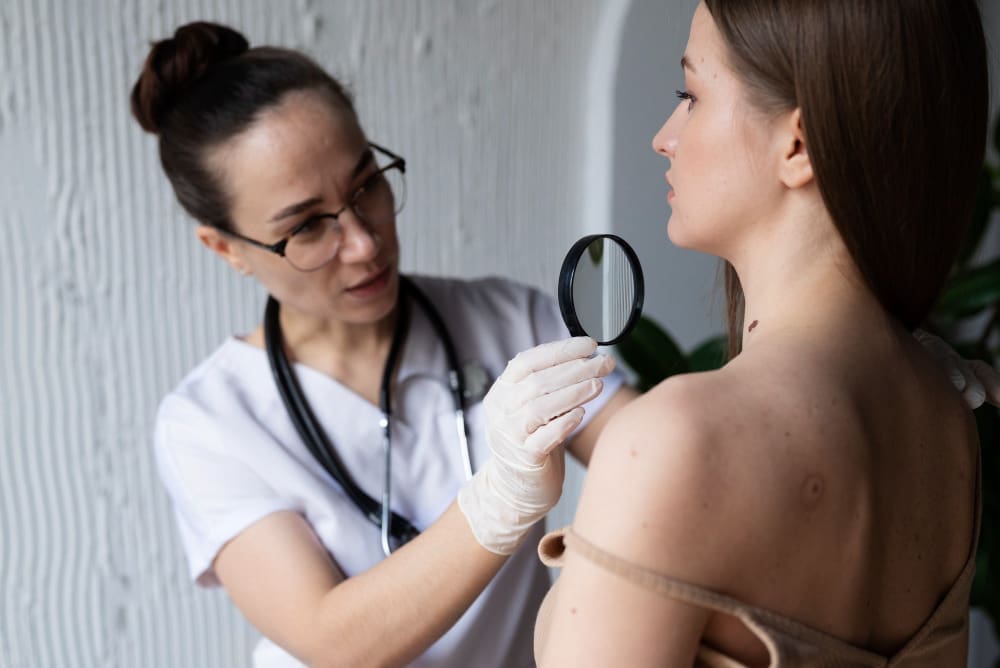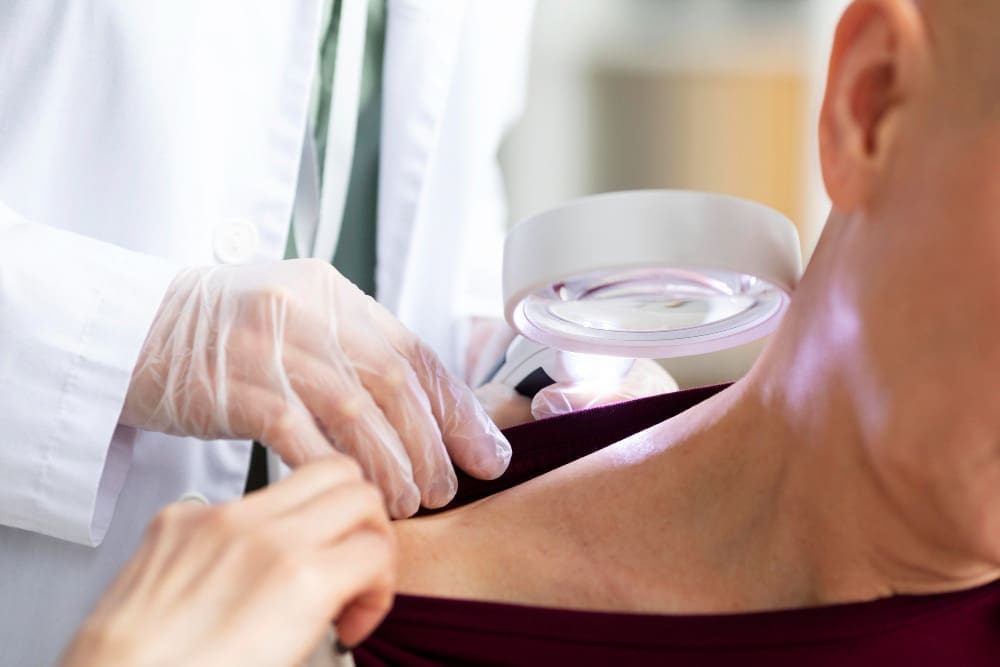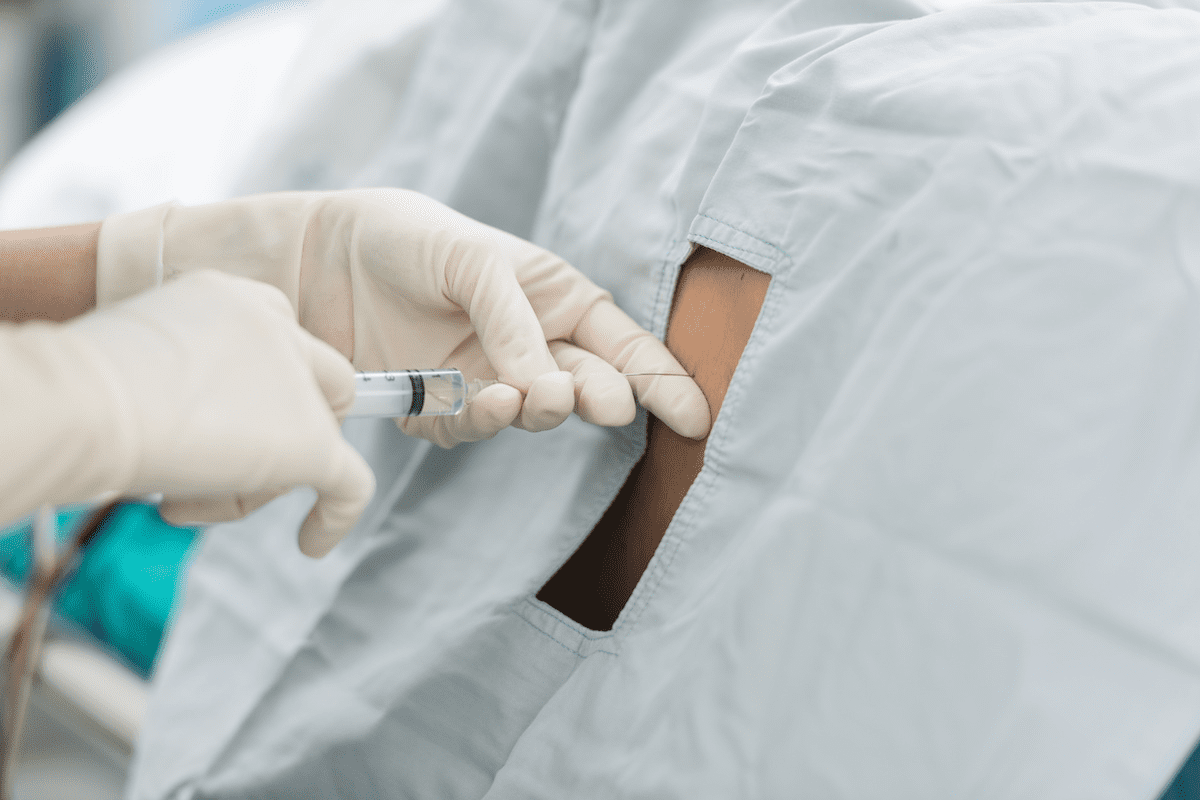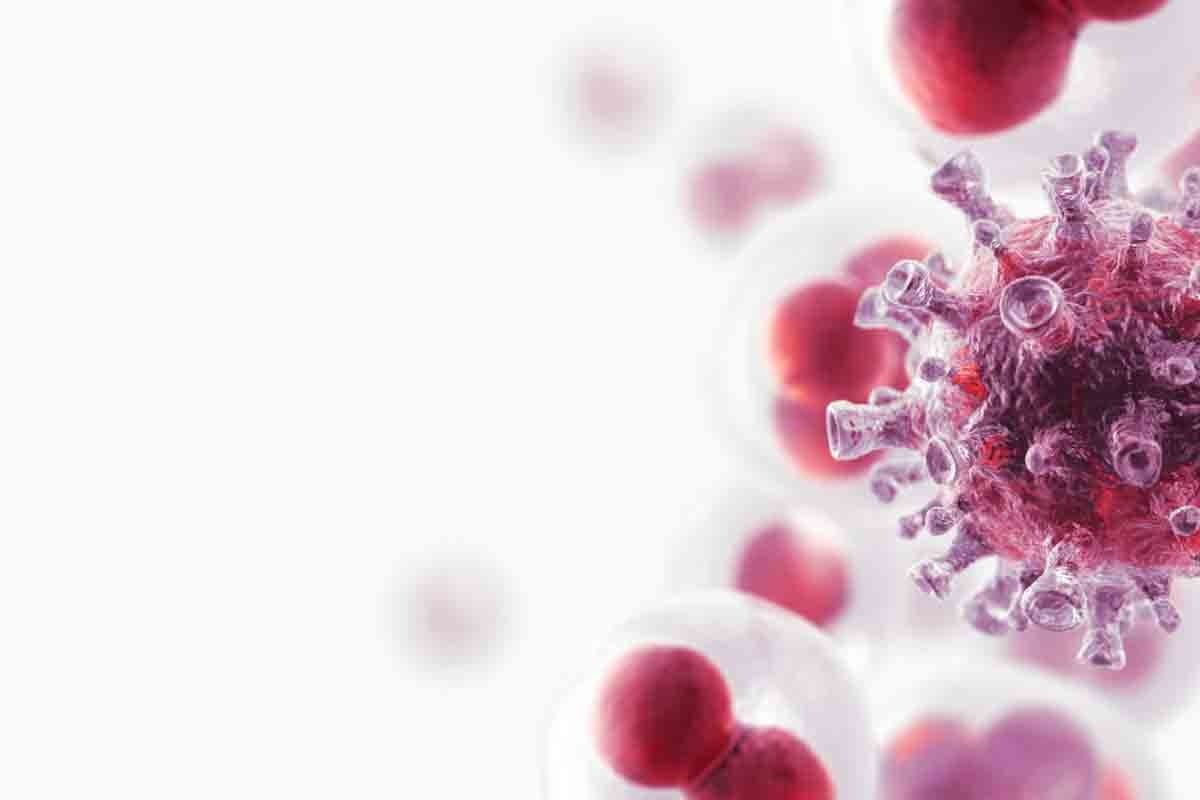Last Updated on November 26, 2025 by Bilal Hasdemir
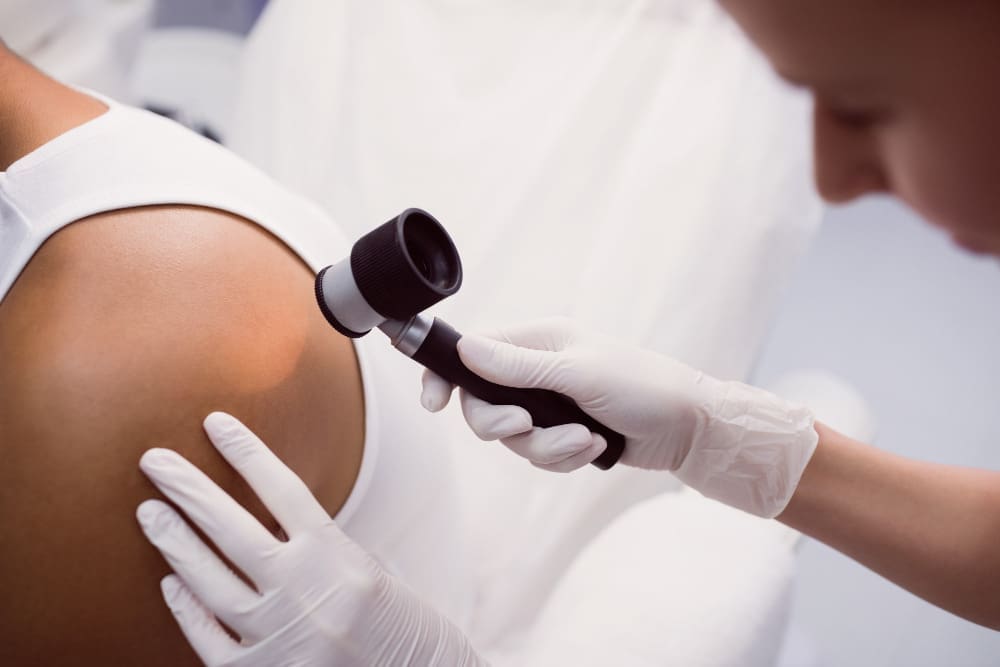
Basal Cell Carcinoma (BCC) is the most common skin cancer, affecting millions. At Liv Hospital, we know how key early detection and effective treatment are for better patient results.
We focus on patient care, making sure patients get the best treatments backed by science. We aim for top-notch results, using the newest basal cell carcinoma treatment methods.
Spotting BCC early boosts the success of skin cancer treatment. This guide will look at six top treatments for BCC. We’ll cover surgery, radiation therapy, and more.
Key Takeaways
- Early detection of BCC is key for good treatment.
- Liv Hospital puts patients first, using the latest treatments.
- We’ll discuss six effective BCC treatments, including surgery and radiation.
- Treatments are chosen based on what each patient needs.
- We aim for the best results, following the latest in BCC treatment.
Understanding Basal Cell Carcinoma
Basal Cell Carcinoma (BCC) is the most common skin cancer. Knowing its basics is key for effective treatment. We aim to give a detailed overview to empower patients with knowledge about their condition.
What is Basal Cell Carcinoma?
Basal Cell Carcinoma starts in the basal cell layer of the skin. These cells make new skin cells as old ones die. BCC grows slowly and can damage nearby tissues. It rarely spreads, but can cause harm if not treated.
Getting diagnosed with BCC can be scary. But knowing about it helps manage it better. The good news is that early treatment can cure BCC most of the time.
Risk Factors and Causes
Many factors increase the risk of getting Basal Cell Carcinoma. Prolonged sun exposure is a big risk, as UV rays damage skin DNA. Other risks include:
- Fair skin that burns easily
- History of radiation therapy
- Exposure to certain chemicals like arsenic
- Family history of skin cancer
- Previous skin cancers
Knowing these risks helps prevent and watch for skin health issues.
Signs and Symptoms
Spotting Basal Cell Carcinoma signs early is key. Look out for:
- A new growth or sore that doesn’t heal
- A shiny bump or nodule that is pink, red, or white
- A flat, scaly, or crusty patch on the skin
- A scar-like area that is white, yellow, or waxy
If you see these signs, see a dermatologist. Early detection leads to better treatment.
Diagnosis and Assessment of BCC
Getting a clear diagnosis of BCC is key for good treatment and care. Doctors use a detailed clinical check and tests to find cancer cells.
Clinical Examination
A doctor’s first step is a clinical check. They look at the skin lesion closely. They check its size, shape, color, and texture. This check helps spot BCC and decide on more tests.
Biopsy Procedures
If a skin spot looks like BCC, a biopsy is done to confirm. There are different biopsies like shave, punch, and excisional. The choice depends on the spot’s size, location, and depth. is for the right treatment.
“The diagnosis of basal cell carcinoma is mainly clinical, but histopathological confirmation is essential for definitive diagnosis.”
Staging and Classification
After diagnosing BCC, the next step is staging and classification. The TNM system is used to measure the tumor’s size and spread. Knowing the stage helps pick the best treatment.
| TNM Stage | Description |
|---|---|
| T1 | Tumor ≤ 2 cm in greatest dimension |
| T2 | Tumor > 2 cm in greatest dimension |
| N0 | No regional lymph nodes involved |
| M0 | No distant metastasis |
Accurate diagnosis and staging help doctors create a treatment plan for each patient. This improves outcomes and quality of life.
Treatment for Basal Cell Skin Cancer: An Overview
Treating basal cell skin cancer is a personalized process. It depends on the tumor’s details and the patient’s health. We need to know everything about the tumor and the patient to treat it well.
Factors Affecting Treatment Selection
Many things decide how to treat basal cell skin cancer. These include:
- The size and location of the tumor
- The depth of the tumor
- The patient’s overall health and medical history
- The patient’s preferences and concerns
The size and location of the tumor are key. Tumors in sensitive or cosmetically sensitive areas need special care.
Treatment Goals and Expectations
The main goal is to remove the tumor completely. We also want to prevent it from coming back. We aim to avoid complications and get the best look possible.
Early intervention is key. Studies show early treatment leads to better results for basal cell skin cancer patients.
The Importance of Early Intervention
Acting fast is critical in treating basal cell skin cancer. Waiting too long can make the tumor bigger. This makes it harder to treat and raises the risk of problems.
Early treatment has many benefits. These include:
- Improved treatment outcomes
- Reduced risk of recurrence
- Better cosmetic results
By understanding what affects treatment and the value of early action, we can give the best care to patients with basal cell skin cancer.
Surgical Approaches to BCC
Surgery is key in treating BCC. There are many methods to fit different needs. The right surgery depends on the tumor’s size, location, and how aggressive it is.
Mohs Micrographic Surgery
Mohs surgery is great for BCC in sensitive areas like the face. It checks the tumor tissue during surgery. This way, it removes cancer cells carefully, keeping healthy tissue intact.
Benefits of Mohs Surgery:
- High cure rate
- Minimal tissue loss
- Optimal cosmetic outcomes
“Mohs surgery has revolutionized the treatment of skin cancers, providing a highly effective solution with excellent cosmetic results.”
Excisional Surgery
Excisional surgery removes the tumor and some healthy tissue around it. It’s common for BCC treatment. It works well for smaller or shallower tumors.
| Tumor Size | Recurrence Rate | Cure Rate |
|---|---|---|
| Small (<1 cm) | Low | High |
| Medium (1-2 cm) | Moderate | Good |
| Large (>2 cm) | High | Fair |
Curettage and Electrodesiccation
Curettage and electrodesiccation scrapes out the tumor and then uses electric current to kill any left cancer cells. It’s good for shallow BCCs.
Each surgery has its own use and benefits. The right one depends on the BCC’s details, the patient’s health, and what they prefer.
Radiation Therapy for Advanced BCC
Radiation therapy is a valuable treatment for advanced BCC. It offers hope to patients with complex tumors. This method is great when surgery is not possible due to tumor size or location.
How Radiation Therapy Works
Radiation therapy uses high-energy rays to damage cancer cells’ DNA. This stops them from growing and dividing. The treatment aims to hit the tumor hard while keeping healthy tissues safe.
We use the latest technology for precise radiation therapy. This ensures the treatment is both effective and safe. Our goal is to control the tumor well while keeping the patient’s quality of life good.
Ideal Candidates for Radiation Treatment
Radiation therapy is best for patients with advanced BCC who can’t have surgery. This includes those with big or complex tumors, tumors in sensitive areas, or those with BCC that came back after treatment.
Ideal candidates for radiation therapy are those who:
- Have tumors that are not easily resectable
- Are not good candidates for surgery due to health reasons
- Have previously undergone surgery or other treatments without achieving desired outcomes
Five-Year Control Rates and Outcomes
Research shows that radiation therapy has a five-year locoregional control rate of 78% for advanced BCC. This means a big part of the time, the tumor stays controlled, and it doesn’t come back in the treated area.
We keep a close eye on our patients and adjust their treatment plans as needed. By combining radiation therapy with other treatments, we can get even better results for our patients.
Effective treatment of advanced BCC requires a complete approach. We consider each patient’s needs and the tumor’s specifics. With radiation therapy, we have a strong tool to fight this tough disease.
Topical Medications and Immunotherapy
Immunotherapy and topical treatments are becoming more popular for Basal Cell Carcinoma. They offer non-invasive options, perfect for superficial BCC or when surgery might harm appearance.
Efficacy and Application of Imiquimod Cream
Imiquimod cream boosts the immune system to fight Basal Cell Carcinoma. It has shown to clear up to 75% of superficial BCC. This makes it a good choice for some patients.
To use imiquimod cream, apply it to the affected area once a day. The treatment time can change based on the product and how well you respond.
5-Fluorouracil Treatment Protocol
5-Fluorouracil is another topical treatment for Basal Cell Carcinoma. It stops cancer cells from growing by messing with DNA. You apply the cream to the area twice a day for weeks.
It’s important to stick to the treatment plan given by your doctor. This will help the treatment work best.
Treatment Duration and Expected Results
Topical treatments like imiquimod and 5-fluorouracil usually last a few weeks. You might see redness and irritation where you apply it.
Even with side effects, many people see great results. The BCC lesions often clear up. Always check in with your doctor to see how you’re doing and to talk about any issues.
Photodynamic Therapy (PDT) for Superficial BCC
Photodynamic therapy (PDT) is a good way to treat superficial basal cell carcinoma. It uses a special agent and light to target cancer cells. This method is non-invasive and helps protect healthy tissue around the cancer.
The Process and Mechanism
Photodynamic therapy has two steps. First, a special agent is applied to the area. This agent is taken up by cancer cells, making them light-sensitive. Then, the area is exposed to light, usually from an LED device.
The light makes the agent in the cancer cells produce oxygen. This oxygen kills the cancer cells.
Key aspects of the PDT process include:
- Application of a photosensitizing agent to the target area
- Selective absorption of the agent by cancer cells
- Exposure to a specific wavelength of light
- Activation of the photosensitizing agent to destroy cancer cells
Ideal Candidates for Photodynamic Therapy
PDT is best for those with superficial basal cell carcinoma who want a non-invasive treatment. It’s good for:
- Lesions in areas you want to keep looking good
- Multiple lesions, as PDT can treat several areas at once
- People who don’t want surgery
But, PDT isn’t right for everyone. The size, depth, and location of the tumor, and your health, are important. Your doctor will decide if PDT is for you.
Recovery Timeline and Effectiveness
After PDT, you might see redness, swelling, and crusting. These usually go away in a few days to weeks. The area might be sensitive to sunlight, so protect it.
Studies show PDT works well for superficial BCC. Table 1 shows how well PDT works.
| Treatment Outcome | Percentage |
|---|---|
| Complete Response | 80-90% |
| Partial Response | 5-15% |
| No Response | 5-10% |
In summary, PDT is a good choice for treating superficial basal cell carcinoma. It balances being effective with looking good. Always talk to a doctor to find the best treatment for you.
Cryotherapy and Other Minimally Invasive Options
Cryotherapy is a new way to treat Basal Cell Carcinoma (BCC). It’s less invasive than traditional surgery. We’ll look at how it works, its benefits, and what to consider when choosing it.
How Cryotherapy Treats BCC
Cryotherapy freezes cancer cells with liquid nitrogen, killing them. It’s great for shallow BCC lesions. The treatment is fast and done in a clinic with little prep.
The cryotherapy process for BCC includes:
- Applying liquid nitrogen directly to the tumor
- Freezing the cancer cells, causing them to die
- Creating a scab that falls off as the area heals
Benefits for Specific BCC Types
Cryotherapy is best for shallow BCCs because it’s gentle and works well. It’s also good for those who can’t have surgery or want a less invasive option.
The advantages of cryotherapy for BCC are:
- It’s minimally invasive, causing less damage to nearby tissue
- The procedure is quick, with little downtime
- It’s effective for shallow lesions
Limitations and Considerations
Cryotherapy is not for every BCC. The choice depends on the tumor’s size, depth, and location, and the patient’s health.
Things to think about with cryotherapy are:
- It might cause scarring or skin color changes
- It’s not as good for deeper or bigger tumors
- Follow-up is needed to make sure all cancer is gone
We check each patient’s situation to see if cryotherapy or another option is best.
Special Considerations for Different BCC Locations
Dealing with BCC on the face is tricky because of the skin’s sensitivity. The face is also very visible, so treatments must work well and look good.
Facial BCC Treatment Approaches
Mohs micrographic surgery is top for face BCC. It’s very effective and keeps healthy skin around the tumor. This is key for areas where looks matter a lot.
Other options include radiation therapy and topical treatments like imiquimod cream. The right choice depends on the tumor’s size, location, and the patient’s health.
BCC on Nose: Treatment Strategies
BCC on the nose is hard because of its complex shape and how important it looks. Mohs surgery is often chosen for its accuracy. For smaller tumors, topical treatments or photodynamic therapy might be used.
When treating nose BCC, removing the tumor while keeping the nose’s look and function is key. Sometimes, reconstructive surgery is needed to fix the nose’s appearance and function after the tumor is gone.
| Treatment Option | Advantages | Considerations |
|---|---|---|
| Mohs Surgery | High cure rate, tissue sparing | Requires specialized expertise |
| Radiation Therapy | Non-invasive, effective for certain tumors | May require multiple sessions, possible side effects |
| Topical Treatments | Non-invasive, preserves tissue | Limited to superficial or small tumors |
Superficial Basal Cell Carcinoma Treatment Options
Superficial BCC is closer to the skin’s surface, so there are more treatment choices. Topical treatments like imiquimod or 5-fluorouracil work well, as does photodynamic therapy. These methods are less invasive and can look good.
The right treatment for superficial BCC depends on the tumor’s size, location, and what the patient wants. It’s important to follow up regularly to watch for any new problems.
Conclusion: Prognosis and Future Developments
Early detection and treatment greatly improve the bcc prognosis for patients. We’ve talked about different ways to treat Basal Cell Carcinoma. These include surgery, radiation, and topical treatments. The right treatment depends on the tumor’s size, location, and type.
Treatment outcomes are usually good, thanks to early intervention. Basal cell carcinoma treatment outcomes show high success rates. Mohs micrographic surgery is very effective for complex cases.
Medical research keeps moving forward, promising better treatments for BCC. New techniques and technologies are being tested. They aim to make treatments more effective and less harmful.
We’re dedicated to giving the best care for Basal Cell Carcinoma patients. By keeping up with medical progress, we aim to offer the best prognosis for our patients.
FAQ
What is the treatment for Basal Cell Carcinoma?
Treating Basal Cell Carcinoma (BCC) depends on several things. These include the tumor’s size, location, and depth. It also depends on the patient’s health. Options include surgery, radiation, topical meds, and photodynamic therapy.
Is Basal Cell Carcinoma curable?
Yes, BCC is very treatable and often curable if caught early. Early treatment is key to stop the cancer from growing. It helps achieve the best results.
What are the treatment options for BCC on the nose?
Treating BCC on the nose needs careful thought about looks. Mohs surgery, radiation, or other methods are used. They aim to work well while keeping the nose looking good.
How effective is Mohs micrographic surgery for BCC?
Mohs surgery is very effective for BCC. It removes cancer while keeping healthy tissue. It’s great for face tumors.
What is Photodynamic Therapy (PDT) and how is it used for BCC?
Photodynamic Therapy uses a special light after applying a photosensitizer. It’s a non-invasive way to treat BCC on the surface. It’s good for looks and works well.
Can Cryotherapy be used to treat Basal Cell Carcinoma?
Yes, Cryotherapy can treat some BCC types. It freezes cancer cells to death. But, it depends on the tumor’s details.
What are the benefits of Imiquimod cream for treating BCC?
Imiquimod cream boosts the immune system to fight BCC. It’s a non-invasive option that’s good for the skin.
How does Radiation Therapy work for advanced BCC?
Radiation Therapy kills cancer cells with high-energy rays. It’s good for big or hard-to-reach BCC tumors.
What is the role of topical medications in treating BCC?
Topical meds like Imiquimod and 5-fluorouracil treat BCC without surgery. They’re great for surface tumors and look good on the skin.
How is Basal Cell Carcinoma diagnosed?
Diagnosing BCC starts with a detailed check-up and biopsy. It’s important to know how far the cancer has spread. This helps choose the best treatment.
What is the treatment for Basal Cell Carcinoma?
Treating Basal Cell Carcinoma (BCC) depends on several things. These include the tumor’s size, location, and depth. It also depends on the patient’s health. Options include surgery, radiation, topical meds, and photodynamic therapy.
Is Basal Cell Carcinoma curable?
Yes, BCC is very treatable and often curable if caught early. Early treatment is key to stop the cancer from growing. It helps achieve the best results.
What are the treatment options for BCC on the nose?
Treating BCC on the nose needs careful thought about looks. Mohs surgery, radiation, or other methods are used. They aim to work well while keeping the nose looking good.
How effective is Mohs micrographic surgery for BCC?
Mohs surgery is very effective for BCC. It removes cancer while keeping healthy tissue. It’s great for face tumors.
What is Photodynamic Therapy (PDT) and how is it used for BCC?
Photodynamic Therapy uses a special light after applying a photosensitizer. It’s a non-invasive way to treat BCC on the surface. It’s good for looks and works well.
Can Cryotherapy be used to treat Basal Cell Carcinoma?
Yes, Cryotherapy can treat some BCC types. It freezes cancer cells to death. But, it depends on the tumor’s details.
What are the benefits of Imiquimod cream for treating BCC?
Imiquimod cream boosts the immune system to fight BCC. It’s a non-invasive option that’s good for the skin.
How does Radiation Therapy work for advanced BCC?
Radiation Therapy kills cancer cells with high-energy rays. It’s good for big or hard-to-reach BCC tumors.
What is the role of topical medications in treating BCC?
Topical meds like Imiquimod and 5-fluorouracil treat BCC without surgery. They’re great for surface tumors and look good on the skin.
How is Basal Cell Carcinoma diagnosed?
Diagnosing BCC starts with a detailed check-up and biopsy. It’s important to know how far the cancer has spread. This helps choose the best treatment.
References
National Center for Biotechnology Information (NCBI). Basal Cell Carcinoma: A Narrative Review on Contemporary Diagnosis and Management. https://pmc.ncbi.nlm.nih.gov/articles/PMC4928477/
National Center for Biotechnology Information (NCBI). Basal Cell Carcinoma: A Narrative Review on Contemporary Diagnosis and Management. https://pmc.ncbi.nlm.nih.gov/articles/PMC3135095/


